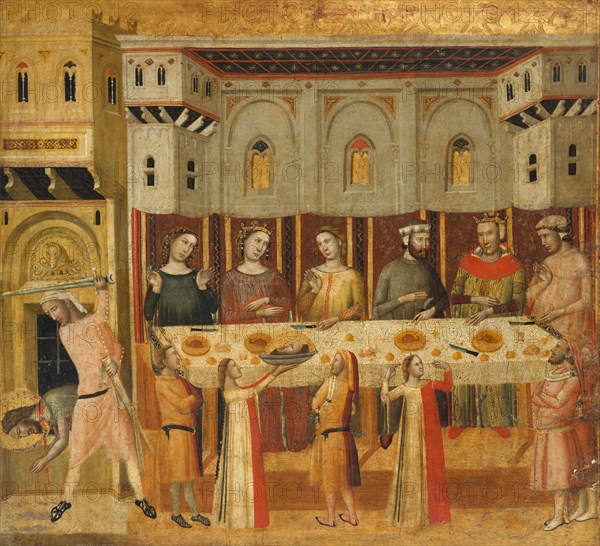
même sujet
Les banquets et repas dans l'art
Sujet
Feast of Herod and the Beheading of the Baptist
Légende
The Feast of Herod and the Beheading of the Baptist, tempera on wood, gold ground, circa 1300-1330. The anonymous Romagnole master who painted this work was active in the first third of the 14th century. The name given to him by art historians comes from an altarpiece depicting the Life of Saint John the Baptist. The now-dismembered altarpiece is one of the most important surviving examples of the Riminese 14th century school; other panels from it are preserved in various public and private collections. In this panel, Salome appears twice, first as Herod's alluring dancer and then as the triumphant presenter of the severed head of the Baptist. According to the Synoptic Gospels, Herod had imprisoned John the Baptist because he reproved Herod for divorcing his wife (Phasaelis) and unlawfully taking Herodias, the wife of his brother Herod Philip I. On Herod's birthday, Herodias's daughter (traditionally named Salome) danced before the king and his guests. Her dancing pleased Herod so much that in his drunkenness he promised to give her anything she desired, up to half of his kingdom. When the daughter asked her mother what she should request, she was told to ask for the head of John the Baptist on a platter. Although Herod was appalled by the request, he reluctantly agreed and had John executed in the prison.
Info+
Photographe : Photo Researchers
Crédit
Photo12/Alamy/Science History Images
Notre référence
LMY21T02_HRP1ET
Utilisation
uniquement en France
Model release
Non
Property release
Non
Licence
Droits gérés
Format disponible
39,6Mo (2,9Mo) / 33,0cm x 30,0cm / 3900 x 3549 (300dpi)